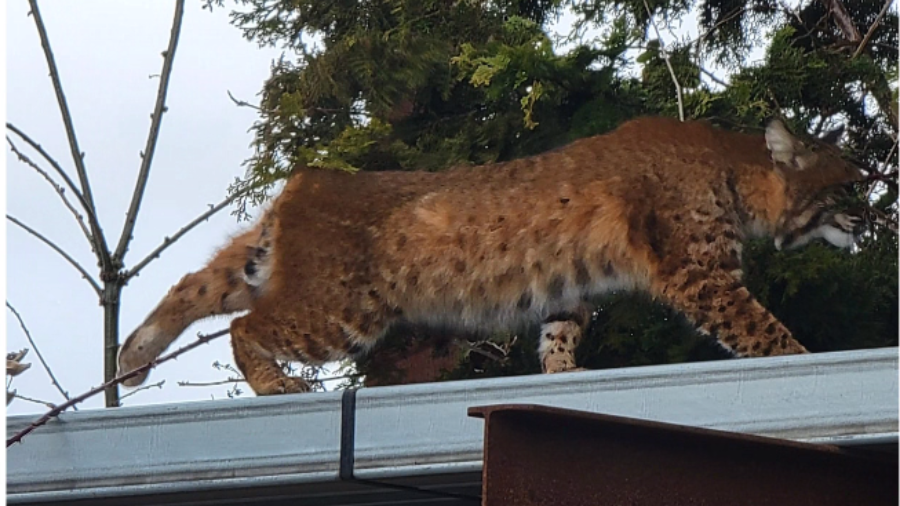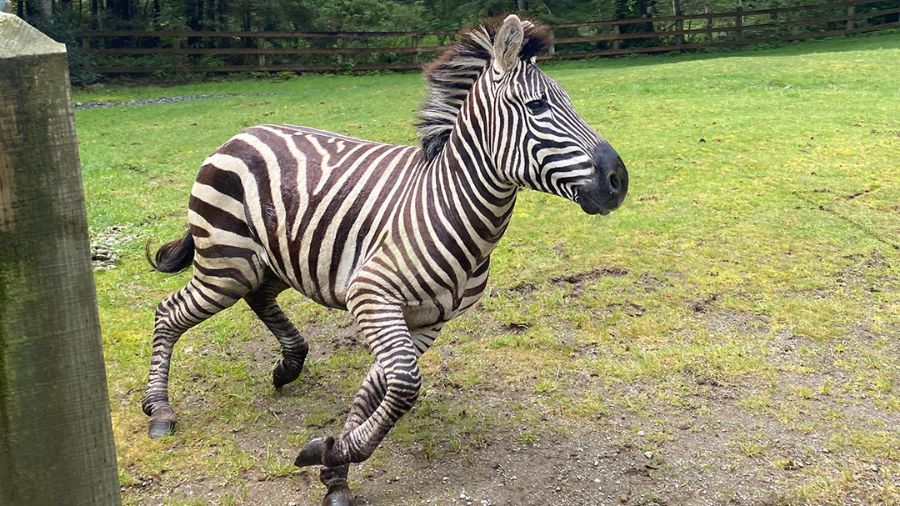Rare bobcat sighting at Mt. Vernon Maintenance Facility
Apr 18, 2023, 2:39 PM

Bobcat sighting (Photo courtesy of WSDOT's Twitter)
(Photo courtesy of WSDOT's Twitter)
A bobcat was spotted at the Mt. Vernon Maintenance Facility, according to the Washington Department of Transportation.
🎞️🍿Now Showing at our Mt. Vernon Maintenance Facility: Cat on a Hot Tin Roof
(This guy visited our crews who took this photo from a distance.) pic.twitter.com/2fck0oKc0f— WSDOT North (@wsdot_north) April 18, 2023
Bobcats are much more common in suburban areas than residents realize, according to the Washington Department of Fish and Wildlife (WDFW), but due to their reclusive ways, they are not often seen. It is even rarer to spot them in broad daylight as they typically hunt in the dark. A bobcat’s vision is six times greater than what a human can see in the dark.
Wolf pack forms in southwest WA, litter of pups expected
The home range size of bobcats in western Washington varies from 2.5 to six square miles for adult males, while generally encompassing rock cliffs, outcroppings, and ledges to use as shelter, for raising young, and as resting sites. Much like a domesticated house cat scratching furniture in a home, bobcats mark their territory boundaries by leaving claw marks on trees, stumps, and occasionally fence posts.
Bobcats travel in predictable patterns along logging roads, railways, and trails made by other animals to move between resting areas, food sources, or hunting areas, according to WSDOT.
Bobcats rarely vocalize, although they often yowl and hiss during the mating season — which lasts from December to May with a peak in January.
While bobcats aren’t known to be aggressive toward humans, they will attack small dogs and cats if nearby.
Aggressive owl wreaking havoc in local Whidbey Park
Bobcats are not often linked to killing domestic animals, but occasionally are responsible for losses of poultry, lambs, small goats, pigs, and house cats, according to WSDOT. To prevent this, the department recommends not to feed wildlife, remove the buildup of feeder foods under bird feeders, feed dogs and cats indoors and clean up after them, and keep dogs and cats indoors, especially from dusk to dawn.
Poultry is the most common victim of a bobcat attack, so for those who own chickens, ducks, or turkeys, make sure to keep them in a secure outdoor pen and house.













